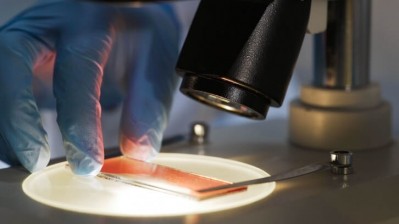Novo Nordisk's Mim8 significantly reduces bleeds in hemophilia A - plans approval submission

Novo Nordisk’s next-generation Factor 8a mimetic bispecific antibody Mim8 significantly reduced bleeds in the phase 3 Frontier 2 trial and performed better than coagulation factor prophylaxis in patients with the blood disorder.
Notably, the trial tested a weekly and a monthly treatment with Mim8 and the monthly treatment was equally or more effective than the weekly treatment at preventing bleeds, which could be a selling point for patients on approval.
In people who had no prior prophylaxis, zero bleeds were seen in 86% of those treated weekly with Mim8 in the trial and 95% of those treated monthly.
Overall, in the previously treated group, 66% and 65% of weekly and monthly treated patients, respectively, had zero bleeds on Mim8. The bleed rate was 48% and 43% better, respectively, after treatment with Mim8 compared with coagulation factor treatment.
Importantly, no safety concerns were raised in the trial and Mim8 was generally well tolerated.
Still an unmet need
“Despite treatment advances, there are still many unmet needs for people living with hemophilia A,” said lead investigator Maria Elisa Mancuso, a senior consultant in hematology at the IRCCS Humanitas Research Hospital in Milan, Italy, in a press statement.
“The Frontier 2 data demonstrated superiority of Mim8 prophylaxis over both on demand treatment and prior clotting factor prophylaxis with respect to the number of treated bleeding episodes in people living with hemophilia A, regardless of their inhibitor status. It is also encouraging to see that in some subgroups in the study, up to 95% of people treated with Mim8 experienced zero bleeds.”
Hemophilia A is an inherited blood clotting disorder and primarily affects people with one X chromosome because the genetic mutation that causes the condition is carried on the X chromosome and is recessively inherited. Around 1 in 5000 people who are assigned male at birth have hemophilia A, which is more common than hemophilia B.
The severity of hemophilia A varies depending on the specific changes to the factor 8 gene and resulting protein. The standard treatment is injected recombinant, or plasma concentrate factor 8, but frequent injections are often required and unwanted clots and infections are a risk for those affected.
Giving patients choice
If Mim8 reaches the market, which seems likely to happen based on the trial results, it will provide competition for another antibody treatment for hemophilia A, Roche’s Hemlibra (emicizumab).
Hemlibra was approved by the FDA for prophylactic treatment of hemophilia A in 2018 and is now approved in more than 100 countries worldwide. It binds to activated coagulation factor IX and to factor X and also activates factor X, therefore compensating for the lack of activity of clotting factor 8 in people with hemophilia A.
So far, Hemlibra has been a blockbuster drug, making $4.5 billion for Roche last year. While this study didn’t directly compare the two antibody treatments, Mim8 may win on efficacy as the no-bleed rates for Hemlibra in the Haven 6 trial were lower than 90% versus the 95% no-bleed rate in patients given once monthly Mim8 in the Frontier 2 trial.
The excellent once-monthly rate may also help Mim8 be competitive, as Hemlibra is only suitable for monthly treatment in some patients (after an initial month of once weekly treatment) whereas others have to take the treatment every two weeks.
Novo Nordisk now plans to submit Mim8 for regulatory approval before the end of the year.











